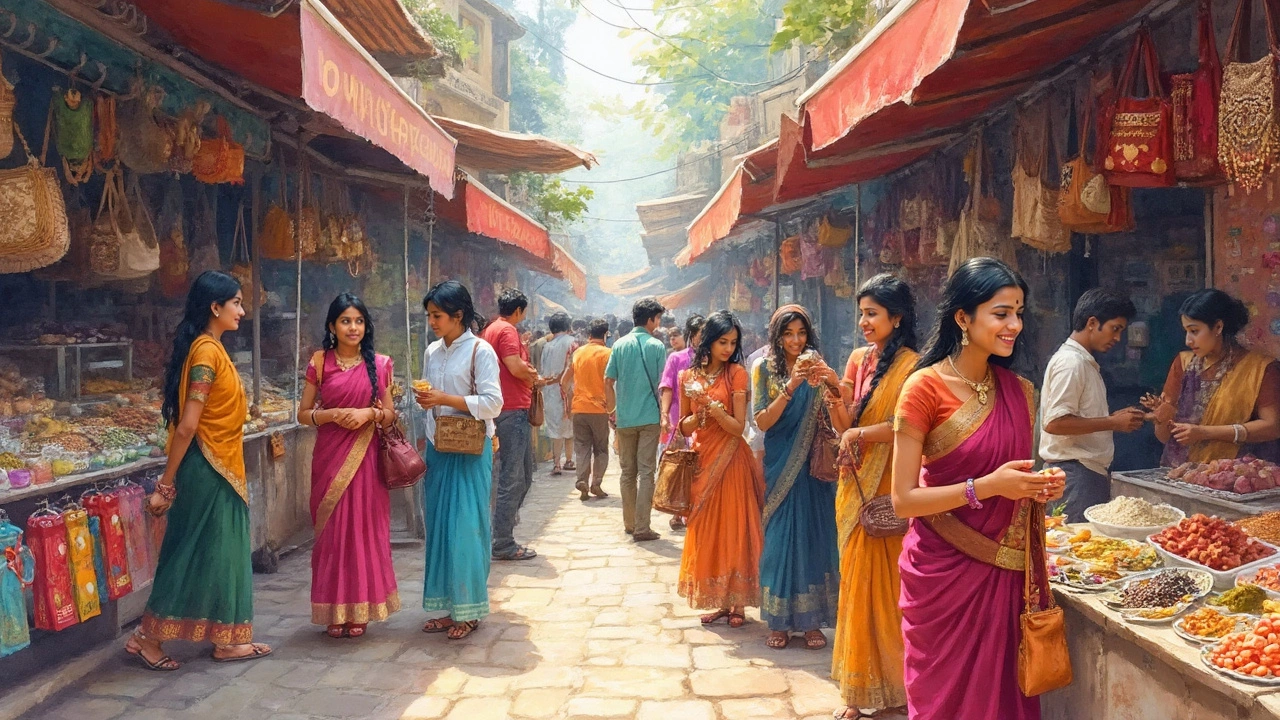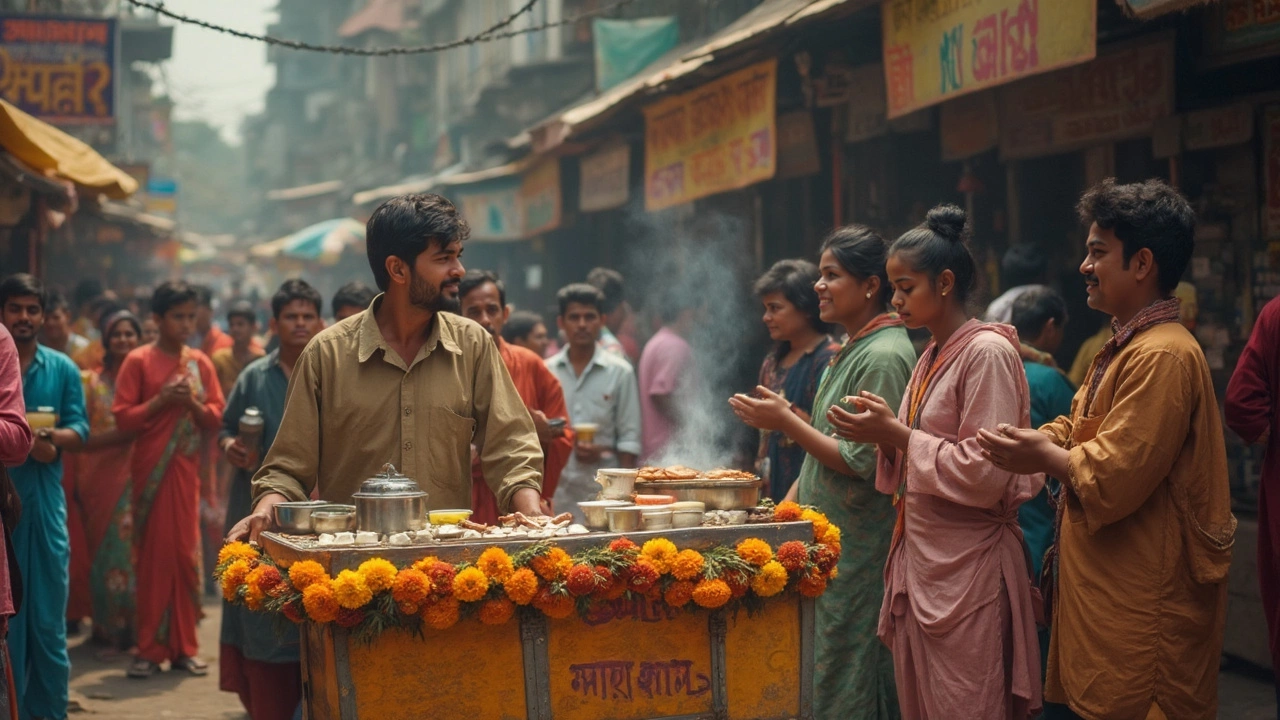Seen the photos of luxury hotels in Mumbai or boutique cafes in Delhi and assumed travel in India is pricey? The truth is, a single US dollar — that's around 80 to 85 Indian rupees (as of June 2025) — unlocks a lot more here than you'd expect. Dropping into a crowded bazaar or grabbing a snack at a roadside stall, you realize quickly how much buying power this small amount holds. But what exactly can you snag for your buck? From local food to unique services and quirky street finds, the answer will probably surprise you.
Understanding the Value of One Dollar in India
Let’s start with the basics: as of today, 1 US dollar usually gets you between 80 and 85 Indian rupees. Exchange rates shift a bit, but for simplicity, travelers often round it to 80 rupees per dollar. That number might not sound like much, but in an economy where basic daily costs are low, it’s worth discussing exactly what pocket change translates to outside the tourist traps. If you’re savvy, you’ll stretch a dollar the way a local would, enjoying authentic flavors, services, and experiences that are out of reach for the same amount almost anywhere else.
You’ll notice in Indian cities the sheer difference in costs between high-end areas and bustling, local neighborhoods. Even just two kilometers apart, a coffee shop in a modern mall can charge 300 rupees for a latte, while a street-side chai stall asks for 10 rupees for a hot, sweet cup that packs more character. The national minimum wage varies, but for millions working informal jobs, daily earnings can be between 200 and 400 rupees — so, yes, what feels like a tiny coin in the US can buy a modest meal here for a worker’s family.
A quick glance at typical small expenses gives you an idea:
| Item/Service | Average Cost (INR) | Approx. US Dollar Equivalent |
|---|---|---|
| Street Chai (Tea) | 10-20 | $0.12-$0.25 |
| Local Bus Ride | 15-30 | $0.18-$0.36 |
| Samosa (Snack) | 10-25 | $0.12-$0.30 |
| Haircut (Budget Barber) | 50-80 | $0.60-$1.00 |
| Mobile Data (1 Day) | 20-40 | $0.24-$0.48 |
| Fresh Coconut Water | 30-50 | $0.36-$0.60 |
So, 1 US dollar does more than just fill your wallet with colorful rupee notes — it unlocks hands-on local experiences and a little taste of daily life. It's worth comparing these costs to the smallest purchases back home just to feel the difference.
Street Food Wonders: How Many Bites for a Dollar?
When people ask about what 1 US dollar can buy in India, food is often at the top of the list. Indian street food is wildly diverse, intensely flavored, and (best of all) incredible value for money. With just a dollar in your hand, you can turn it into a progressive meal by wandering through the right market stalls. Let’s break down some real choices that are delicious and memorable:
- Chai and Samosa Combo: At almost any busy intersection, you can find a vendor pouring out steaming cups of chai for 10-15 rupees, and hot-fried samosas for another 15-25. So two samosas and a chai together? You’re set for a classic Indian snack break for literally under 1 dollar.
- Fresh Jalebi: Hot sugar spirals, crispy and sticky, sold from carts for 20-30 rupees a portion. Sweet tooth? You could buy enough for two to share and still not spend the whole dollar.
- Masala Dosa Break: Head south or to a South Indian eatery—dosa, a big crispy rice crepe filled with spicy potatoes and served with chutney, often priced around 40-60 rupees in no-frills cafes. Not quite a lavish brunch, but enough for a light bite and a taste of coastal flavors.
- Vada Pav: Mumbai’s cult sandwich—spiced potato patty tucked in a bun—goes for just 20-30 rupees. Even Elliot calls it the ‘Indian slider.’
- Banana Leaf Meal Sample: In Kerala and Tamil Nadu, smaller hotels offer basic vegetarian lunch thalis (mini platters) for 60-80 rupees. With some negotiation or a smaller portion, that’s your meal, water included.
- Pani Puri Party: Street vendors dish out little, hollow puri shells filled with tangy water and potato for about 20-30 rupees a plate. This could be the ultimate bang-for-buck street snack in the world.
The thrill is in exploring. Ditch the fast food chains and follow the locals — they know the freshest stalls and family-run spots. You could eat small snacks several times a day, all for less than your morning Starbucks order in New York.

Market Finds: Gifts, Essentials, and Everyday Surprises
Step into a bustling Indian market and suddenly your dollar offers up a trove of tiny treasures. Not everything is a bargain (modern malls target a different crowd), but plenty of daily goods and local crafts are delightfully affordable, especially if you know where to look and don’t mind a bit of friendly haggling. Here’s what that crumpled George Washington can scoop up as a souvenir or a handy travel essential:
- Handcrafted Trinkets: Small wooden keychains, beaded bracelets, or colorful bangles often go for 30-60 rupees. Often hand-painted or homemade—and perfect as gifts for friends back home.
- Stationery: India has a paper obsession. Spiral notebooks, gel pens, or even neat little sketch pads are yours for roughly 20-40 rupees each. You’ll notice students buying them in bulk at these prices.
- Basic Toiletries: A bar of branded soap or a travel-sized shampoo is about 30-50 rupees. Even the trusted ‘Boroline’ antiseptic cream—a staple for generations—comes for less than a dollar.
- Pocket Notebooks and Snacks: Grab a small journal, a packet of Parle-G biscuits (India’s best-loved cookies), and perhaps even a bottle of soft drink—all for under 80 rupees.
- Street Flowers: Local florists string together little garlands for prayers or decoration, often charging 10-30 rupees. Bring some color to your guesthouse or offer them as a warm gesture when visiting someone.
- Tiny Home Goods: Stainless steel spoons, cups, or basic kitchen implements are standard at 20-50 rupees apiece. Pick up a steel bowl as a unique keepsake—it’ll last forever.
- Incense and Spices: Fragrant incense sticks, turmeric or masala packets, sold in small quantities, often at 20-40 rupees each. Your kitchen (and suitcase) will thank you.
Pro-tip: If you want something specific—like a custom-stitched cloth bag or a hand-drawn name plate—just ask local artisans. For 100 rupees or less, many will happily make something on the spot. Just remember, markets pulse with conversation, and a polite bargain is not only expected but part of the fun. Vendors enjoy it more than you think (well, most of the time!).
Getting Around and Local Experiences for a Dollar
If you thought that a single US dollar couldn’t get you far when it comes to experiences, think again. In India’s urban and rural landscapes, everyday transit is cheap, and immersive experiences can cost less than a bottle of water in the West. Let’s look at what movement and moments a dollar covers:
- Local Bus Rides: For 15-30 rupees, you can board a city bus and travel several miles—from a market in the center to a leafy suburb, or even to the city railway station with all your bags. The experience comes with its own people-watching charm, and doors are almost never closed as long as you’re polite and quick.
- Shared Auto Rickshaw Cruises: Hop into a rickshaw along a shared route for 20-40 rupees per seat. Not only are you moving through traffic faster, but you’ll share stories, glances, and jokes with folks headed in your direction. The shared laughs? Priceless.
- Bicycle Rentals: Many towns now offer rental bicycles for as little as 40-60 rupees per hour. Cycle along a riverside or through the winding streets—nothing beats the breeze (or the traffic jams avoided).
- Local Temple or Palace Entry: In less-touristy areas, some heritage sites set entry fees for locals at 10-30 rupees, and foreigners may pay a little more. But there are always hidden gems—ancient step-wells, painted temples, and historic homes—where the entry fee won’t break your bank.
- Quick Personal Services: At roadside barber shops, 50-80 rupees gets you a basic trim or shave, complete with head massage. Sometimes you even get an unsolicited conversation about cricket, Bollywood, and family life for free.
- Photo Booth Prints: For insta memories, those old-fashioned photo booths at railway stations or pilgrim towns print you a strip of ID-sized photos for about 30-50 rupees.
- Public Toilets: Using a clean facility at a metro station or tourist spot will cost 5-10 rupees, so one dollar covers you for plenty of comfort stops without a second thought.
For something quirky, ask a local to tie a traditional turban or saree for you—many are happy to do it for a tip that equates to less than a buck, especially in Rajasthan or Tamil Nadu’s tourist lanes. A little generosity goes a long way here. And if you get lost? A passerby is more likely to offer guidance (and a chai) than any smartphone app.

Smart Spending Tips: How to Make Your Dollar Go Further
Maximizing a single dollar calls for a blend of curiosity and local sense. Fancy places love big bills—the further you wander from the tourist hotspots, the more your money multiplies. If you’re new in town, keep these tips in mind:
- Ask Locals, Not Only Guides: Hotel concierges can point you to safe ‘foreign-friendly’ choices, but auto drivers, shop owners, and even college students love sharing their favorite cheap eats or markets. Elliot always claims he learns more in five minutes with a street vendor than an hour in Lonely Planet.
- Use Small Change: Vendors (especially in smaller towns) may look annoyed if you hand over a 500-rupee note for a 20-rupee bill. Hoard your coins and 10/20/50s—they’re your ticket to tiny pleasures.
- Compare Prices: Two stalls, ten feet apart, may mark up the same snack differently. Wander and ask, but don’t feel bad paying the local price. It’s usually not a trick, just market variety.
- Seek the Early Bird Advantage: Markets open early, and food is often freshest pre-noon. Vendors sometimes offer discounts to their first customers—an old-fashioned ‘good luck’ tradition.
- Learn a Few Words: Saying ‘kitne ka hai?’ (what’s the price) or ‘bahut mehenga hai’ (too expensive) with a grin often draws a smile and a better deal. Effort matters.
- Trust Your Eyes and Nose: Freshness matters, especially with food. If a cart looks clean and busy, go for it. If the oil in a fryer is dark, pick somewhere else.
- Know What’s Free: Tasting samples, hand-washing stations at eateries, drinking water in temples, or a quick prayer at roadside shrines—all rare in the West, all part of the local hospitality here.
If you plan a little (and embrace spontaneity), your *what can 1 US dollar buy in India* adventures will fill both your Instagram feed and your photo album in ways you never expected. There's something fun about discovering just how much that little green bill unlocks across the subcontinent. Maybe it isn’t really about the exchange rate or value for money, either. Every tiny spend brings you closer to the everyday heartbeat of India, one snack, trinket, or new friend at a time. That’s worth more than any luxury dinner, if you ask me.
